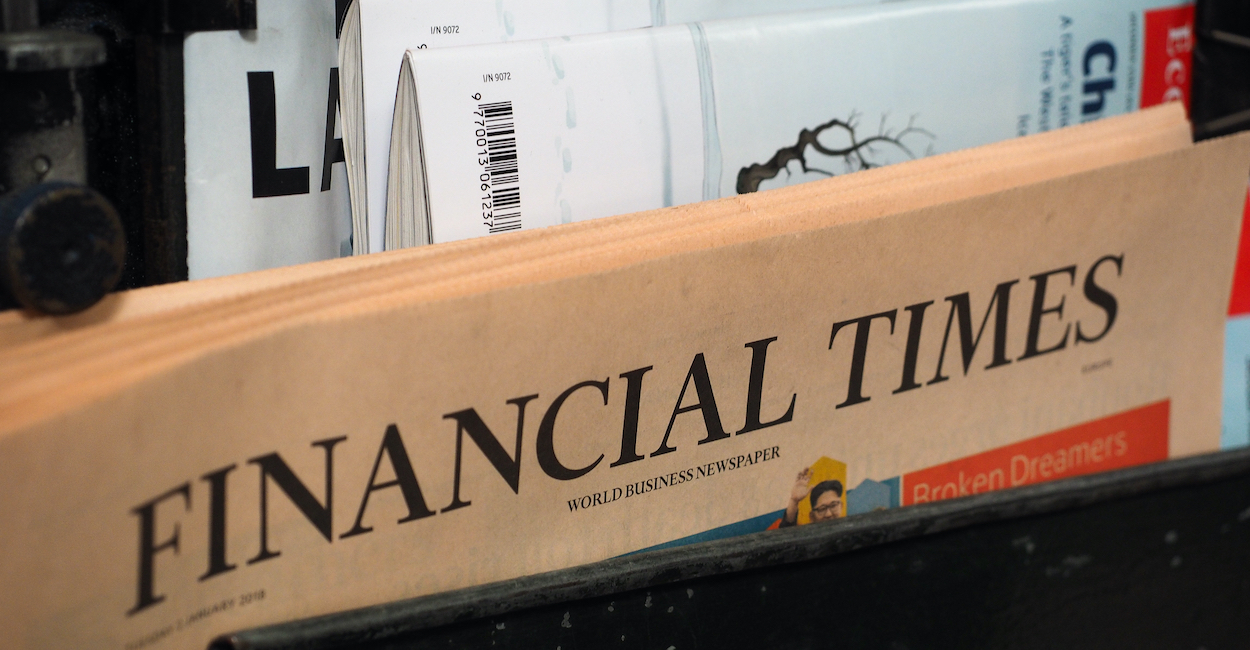By Catherine McBride – 6 minute read
In an article published by the Financial Times on 25th April 2024 under the title “A UK deal to harmonise veterinary standards with the EU could boost British agrifood exports to Europe by more than 22 per cent” the FT perpetuated five regular myths about farming and food exports. Trade economist Catherine McBride provides this timely antidote…
Myth 1. “A UK deal to harmonise veterinary standards with the EU could boost British agrifood exports to Europe by more than 22 per cent”
As usual, the word ‘could’ is doing a lot of heavy lifting in the FT’s Headline and again the FT has snuck the counterbalance into the fine print: apparently, imports from the EU would also increase by 5.6%. So, which one would be greater: a 5.6% increase in the UK’s massive agrifood imports from the EU or a 22% increase in the UK’s much more modest agrifood exports to the EU?
If the FT’s figures are based on an increase in export values in 2023, then a 22% increase in the UK’s SITC 0 Food & live Animals exports to the EU would be a mere £273 million larger than a 5.6% increase in the EU’s STIC 0 Food & Live Animals exports to the UK. This would be a tiny fraction of the UK’s total trade, but trying to achieve this by agreeing to follow EU veterinary standards would tie the UK’s hands in negotiating new trade deals. There would be the constant fear, reiterated by re-joiners, that the EU would prevent us from exporting to them if we signed a trade agreement with for example the US, just as the EU has tried to prevent meat imported from Australia and New Zealand under the new trade agreements, being sold in Northern Ireland.
Myth 2. The UK has the spare capacity to increase agrifood production by 22%
No we don’t, the UK doesn’t have the additional land to increase the UK’s agrifood exports by 22%. The UK already uses 71% of its land for agriculture and yet we are still a major net importer of agrifood products. Couple this with the fact that the UK population is increasing by about 750,000 people a year through net immigration and that Defra is paying farmers to take land out of production, and it is obvious this predicted increase in production is plucked from thin air. The academics who wrote the paper as well as the Food and Drink Federation who appear to be promoting it, have not considered the primary limiting factor of UK agricultural production – land.
According to Defra the only agrifoods the UK produces in large enough quantities to meet both domestic demand and have surpluses to export are: Barley, Oats, Lamb and Milk. Of these, only lamb and milk exports could possibly benefit from a veterinary agreement. But as the UK has continued to export the majority of its excess milk and lamb to the EU since Brexit, (without a veterinary agreement) and exported the rest to non-EU countries, it is hard to justify the need for a veterinary agreement.
Signing a veterinary agreement with the EU would not increase UK farmland nor would it increase UK agricultural productivity. In fact, many EU regulations actively restrict productivity increases for example the EU’s ban on Gene editing. Similarly, The UK government’s policy of paying UK farmers to grow wildflowers, recreate bogs and plant trees will lower UK agricultural productivity even further.
Defra’s production-to-supply ratio (self-sufficiency) for all foods was only 63% when the UK joined the EU in 1973 but it had fallen to only 60% in 2020 when we left the EU. So a frictionless border clearly didn’t help UK food production meet UK demand. Instead, the UK became a captured market for EU producers. Between 2000 and 2019, (the UK’s high point for exports to the EU due to pre-Brexit stockpiling) UK food, feed and drink exports to the EU increased by 70% measured in constant 2022 prices, but over the same period, UK imports from the EU increased by 108%. Even in 2000, UK imports from the EU were more than double UK exports to the EU.
It is time to face reality: food trade between the UK and the EU is predominately one-way. Harmonised veterinary standards would only make this worse. It would NOT increase UK production.
Myth 3. The only thing preventing the EU from buying more UK food is border friction
If Border friction is the problem preventing UK exports to the EU, why did we export so little food to the EU when we were members with no border checks?
-
- Many EU countries don’t eat the same types of foods as the British: for example, central and eastern EU countries prefer pork to lamb. According to Defra, the UK’s largest export markets for food, feed and drink in 2022 was Ireland, and then France, but our third biggest export market was the US. The UK exported more food, feed and drink to the US (without a trade agreement, let alone a veterinary agreement) than we exported to the Netherlands, and 2.4 times more than we exported to Germany, 4 times more than we exported to Spain or Belgium and five times more than we exported to Italy. The UK exported more food, feed and drink to China and to Singapore than it exported to Italy, and Singapore’s population is only 5 million people. All of the other twenty EU countries did not make the UK’s top ten export markets for food, feed and drink. It is time the UK admitted most continental EU countries don’t like British food.
- Many EU countries can’t afford UK imports, or their domestic production is cheaper than UK agrifoods. I suspect the high energy prices in 2022 and/or the recession in some EU countries also reduced UK exports. Exports are determined by the buyer – not the seller. If countries can’t afford expensive imported food, they won’t buy it, regardless of whether they have a veterinary agreement with the exporting country. But if they like your food and they can afford it – then they will buy it with or without a trade agreement as we can see with our exports to the US and China.
- The UK’s lack of excess production is preventing exports to the EU not the lack of a Veterinary Agreement. The UK doesn’t have excess supply to export. As noted earlier, this is true for all agricultural products other than barley, oats, lamb and milk. UK milk exports are a fraction of domestic consumption, and 90% goes to the Republic of Ireland where it is turned into butter and cheese and exported internationally including back to the UK. Ireland exports butter to countries that do not have a trade (or vet) agreement with the EU. For example, you can buy Irish Kerrygold Butter in any supermarket in Sydney, Australia. You can also buy Danish Lurpak. Both Ireland and Denmark have small populations compared to their butter production, so they have a surplus to export, but I have never seen any UK-brand butter for sale in Sydney. UK producers can sell every pound of butter they make in the UK, they don’t need to export.
Myth 4. The food and drink sector is the same as the agrifood sector.
A regular sleight of hand often used by the NFU is to conflate agriculture with the food and drink sector. Agriculture makes up only 9% of the total agri-food sector’s GVA and only 10% of its employment. So while the Food and Drink sector does employ 4.2 million people only 400,000 work in agriculture. And while the UK’s food, feed and drink exports are worth £25 billion, at most only £3 billion of this is meat or dairy products, and we are exporting these products now to the EU without a veterinary agreement.
Myth 5. A veterinary agreement would ‘deliver for the British people’.
The FT has quoted a labour MP and shadow Cabinet Office minister Nick Thomas-Symonds as saying: “Labour would work to improve the UK’s relationship with the EU to deliver for British people, including through seeking to negotiate a veterinary agreement.” (My emphasis) Thomas-Symonds doesn’t explain why he believes tying the UK into expensive EU food imports and preventing the UK from importing cheaper food made in non-EU countries would “deliver for British people”. It wouldn’t. It would only help EU exporters retain their captured UK markets. Nor would it help many UK food exporters as most UK exports are processed or highly processed food and drink. Only 7.3% of UK food, feed and drink exports are unprocessed and that proportion will include oats and barley exports – which do not need a veterinary agreement.
Why is the Labour Party, egged on by the FT, even suggesting the UK should harmonise its veterinary standards with the EU? Well, as the US election approaches and the Republicans look like they could win the Presidency, then there is a chance that the UK and the US could agree a trade deal. This would be a much bigger boost to the UK economy than signing an EU veterinary agreement. It would also hammer a major nail into the Re-joiner’s coffin. This is what’s known in football circles as ‘getting your retaliation in first’ and is nothing other than the regurgitation of tired self-serving myths from protectionists who fear competition.
If you appreciated this article please share and follow us on Twitter here – and like and comment on facebook here. Help support Global Britain publishing these articles by making a donation here.
Catherine McBride OBE is an economist and the author of Brexit and UK trade – What has changed? a paper analysing UK trade performance by sector since Brexit. She is a member of the Government’s Trade and Agriculture Commission.
Photo of Financial Times masthead by Claudio Divizia from Adobe Stock

